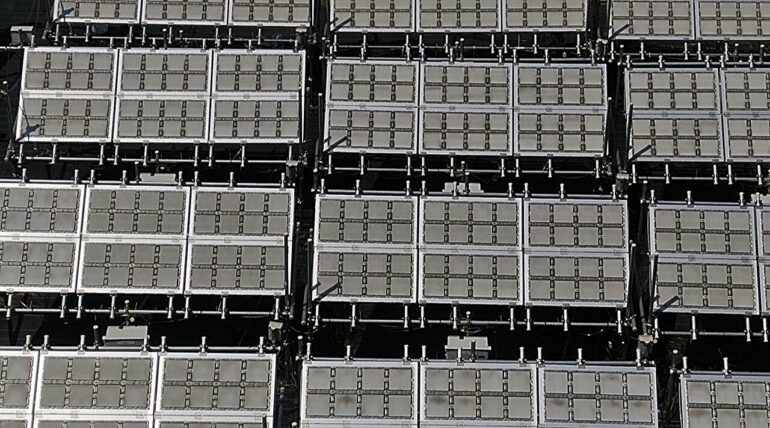Solar panels are an increasingly popular way to generate electricity from the sun’s energy. Although humans are still figuring out how to reliably turn that energy into fuel, plants have been doing it for eons through photosynthesis.
Now, a team reporting in ACS Engineering Au has mimicked the process to produce methane, an energy-dense fuel, from carbon dioxide (CO2), water and sunlight. Their prototype system could help pave the way toward replacing nonrenewable fossil fuels.
Although methane is a potent greenhouse gas, it’s also a highly energy-dense fuel and the main component of natural gas. Fossil fuels, including natural gas, take millions of years to form, and extracting them from the environment can have detrimental effects. Finding methods to produce methane from renewable sources of energy could help reduce the need for nonrenewable fossil fuels over time. One source of sustainable, abundant energy provided to Earth daily is the sun.
Humans have tried tapping into this resource with solar panels, but plants already have it figured out, using sunlight to power photosynthesis and convert CO2 and water into oxygen and sugars to use as fuel later.
Previously, Kazunari Domen and colleagues developed a system that used sunlight to split water into hydrogen and oxygen gas. Now, they wanted to evolve the process to more fully mimic photosynthesis, taking in CO2 to store the sun’s energy in methane instead, while still using cost-effective and easily scalable materials.
The team created a set of reaction cells, similar to solar panels, that were each coated with an aluminum-doped strontium titanate (SrTiO3) photocatalyst to help power the reaction. These coated cells were filled with water and placed in the sun.
Under those conditions, the water split into hydrogen and oxygen gas, which were separated, and the purified hydrogen gas was fed into the second part of the system. In the second chamber, the hydrogen gas reacted with CO2, forming methane and water, the latter being recycled back into the first step with the photoreactor.
Next, they created a 130-square-foot array of the cells—about the size of a small bedroom—that operated continuously for three days in a variety of weather conditions. Though promising, the team recognizes that the efficiency of artificial photosynthesis systems needs to improve before these devices can become viable options for large-scale power generation.
The researchers say that this proof-of-concept system could be adapted to help produce precursors for plastics or other chemical feedstocks, as well as scaled up to produce larger amounts of sustainable biofuels.
More information:
Taro Yamada et al, Production of Methane by Sunlight-Driven Photocatalytic Water Splitting and Carbon Dioxide Methanation as a Means of Artificial Photosynthesis, ACS Engineering Au (2023). DOI: 10.1021/acsengineeringau.3c00034
Provided by
American Chemical Society
Citation:
Mimicking ‘plant power’ through artificial photosynthesis (2023, October 11)



